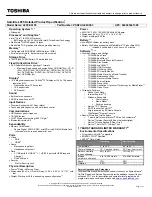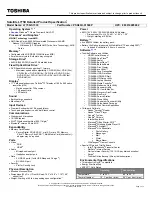
Introduction
This Operating Manual describes, among other things, how to set up, operate and
expand the PCD-4ND and PCD-5ND notebooks. Unless otherwise specified, the
information applies for both the PCD-4ND and the PCD-5ND.
Innovative technology and ergonomic design make this notebook the ideal user-
friendly and reliable travel companion. The MS-DOS operating system, Windows
for Workgroups and Software Utilities are pre-installed on the hard disk to facilitate
the procedure when you use your notebook for the first time.
The power-management SL-enhanced processor coupled with power-management
functions (APM = Advanced Power Management) ensure effective use of the
battery life of the notebook. The battery can be simply replaced or recharged using
the optional auto adapter should it drain while you are on the move. You can use
the notebook with an additional battery. To do so, you must change the built-in
floppy disk drive against the additional battery. This will double battery life in mobile
use. To allow you to utilize the optimum capacity of the battery, you should deep-
discharge and recharge it at regular intervals.
The PCD-4ND is equipped with a 4 MB main memory which can be upgraded to 8,
12 or 20 MB. The PCD-5ND is equipped with a 8 MB main memory which can be
upgraded to 16, 24 or 40 MB. Data is saved on an IDE hard disk drive. An external
disk drive can be connected to the parallel port of the notebook if you wish to work
with floppy disks. The notebook also features two PCMCIA slots for using PCMCIA
cards (types 1, 2 and 3). The drivers for PCMCIA cards are included on the
PCMCIA Utility floppy disk supplied.
Connections for external devices such as screen, printer and mouse are located on
the rear panel of the notebook. The PS/2 port recognizes the input device (e.g.
external keyboard, mouse) which has been connected. The parallel port (which
supports ECP and EPP modes) is designed to accommodate bi-directional data
transfer. In addition, the notebook has a connection port for a docking unit or a
station box. The notebook disposes of a infrared interface for wireless data
transfer.
An audio controller, a loudspeaker, a microphone and an audio connector provide
your notebook with an audio capability. You can thus incorporate voice, noise
effects and music into your PC environment. You can also connect an external
microphone and an external loudspeaker.
A26391-K64-Z100-2-7619
1












































